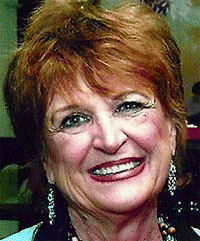Maureen Hannley, PhD, is currently Chief of the Research Division of the Department of Otolaryngology and Communication Sciences at Medical College of Wisconsin and Research Consultant for the Triological Society. She formerly served as the Chief Research Officer of the American Academy of Otolaryngology-Head and Neck Surgery Foundation and has held positions at the National Institutes of Health, Stanford University Medical School, and Arizona State University.
Explore This Issue
October 2007In the past, almost all support for otolaryngology research was provided through the National Institute on Deafness and other Communication Disorders (NIDCD) or its parent institute, the National Institute on Neurological Diseases and Stroke (NINDS). While it is true that the NIDCD still supports more than 60% of the research projects, primarily those related to auditory or vestibular research, physician-scientists conducting research related to head and neck cancer are now supported by the National Cancer Institute (NCI) and the National Institute for Dental and Craniofacial Research (NIDCR). Other investigators have found support in the National Heart, Lung, and Blood Institute (NHLBI), National Institute for Child Health and Human Development (NICHD), National Institute of Allergy and Infectious Diseases (NIAID), National Center for Complementary and Alternative Medicine (NCCAM), and the newest institute, the National Institute for Biomedical Imaging and Bioengineering (NIBIB) (see Figure 1). The NIBIB has expressed strong interest in supporting projects related to biotechnology, such as image-guided surgery, tissue engineering, and robotic surgery.

Funding Opportunities
Otolaryngologists-head and neck surgeons with the interest and motivation to include research as a part of their careers often overlook prime funding opportunities that may offer just the right impetus to move from an idea to a fully formed research proposal. All NIH institutes publish Program Announcements (PAs) on a regular basis, indicating their desire to support more research in certain programmatic areas that they consider to have high priority or to be underrepresented in their grant portfolio. Responding to one of these PAs gives the applicant a small advantage over other applications that are completely investigator-initiated, in that if the review has yielded a borderline percentile score, the application may be considered for funding by the institute on the basis of its high program relevance.
Table 1 presents just several of the currently active PAs that would offer research opportunities to otolaryngologists-head and neck surgeons. Some clearly require bench skills; others would assume interest and skills with clinical research. To view the full range of PAs for all institutes, and to read, and download the full text of PAs of interest, including contact information, go to http://grants1.nih.gov/grants/guide/search_results.htm?year=active&scope=pa .

NIH certainly represents the gold standard of research funding, but there are numerous other unrecognized or overlooked funding opportunities. One of the best to be offered in many years is the Clinical Scientist Development Award, a grant sponsored jointly by the Triological Society and the American College of Surgeons to provide supplemental funding to otolaryngologists-head and neck surgeons who receive new NIH career development awards (K08/K23), beginning in 2007. These awards provide a maximum of $80,000 per year for up to five years, making it far more feasible for the surgeon-scientist and his or her department to agree to the 75% time commitment requirement attached to these awards. The award is available to recipients of K awards from all NIH institutes with which the program was initiated. Full details about eligibility and submission guidelines are available on the Triological Society research Web page: www.triological.org/researchgrants.htm .
For the investigator who is seeking funding for seed projects or preliminary work prior to entering the NIH’s highly competitive arena, a good place to start is by browsing one of two very productive databases that can provide keyword-driven sources of government, industry, and private foundation funding for research. The Community of Science (www.cos.com ) is the world’s most comprehensive funding resource, with more than 22,000 records representing nearly 400,000 opportunities, worth more than $33 billion. A unique feature is the ability to search among 500,000 profiles of researchers from 1,600 institutions throughout the world and discover who’s doing what-current research activity, funding received, publications, patents, new positions, and more. The second database, GrantsNet, (www.grantsnet.org/search/srch_specify.cfm ) is found on the Web pages of ScienceCareers, and is sponsored by the Howard Hughes Medical Institute and the American Association for the Advancement of Science. It features a search engine, funding directory, tutorials on grantwriting, science funding news, and many more features. Both are excellent sources and worthy of frequent reference.
Discussion of seed grants as a pathway to NIH funding would not be complete without mention of the AAO-HNS Foundation’s Centralized Otolaryngology Research Efforts (CORE) Grant Program, now in its eighth year. CORE, an alliance of 10 senior societies with the foundation, receives and reviews research project, training, and career development grant applications once a year using an application and review system modeled on that of NIH. Approximately one-third of all Foundation and CORE grant recipients have gone on to submit successful NIH grant applications.
Otolaryngologists-head and neck surgeons are making their mark as competent and productive surgeon-scientists at the NIH in virtually every one of the specialty’s focus areas. Their basic, translational, and clinical research is contributing to the body of knowledge about normal and abnormal structure and function at the molecular, cellular, genetic, and behavioral levels, developing and assessing new diagnostic and intervention strategies, and helping to raise the level of evidence about the effectiveness of existing interventions. With continued institutional and organizational commitment to research training, career development, and support of seed research, this promising trend can continue to grow and stabilize, to the benefit of all stakeholders in the biomedical research enterprise.
Send Us Your Feedback
We’d like to know what you think about our articles. Please feel free to respond to our stories by e-mailing ENToday@lwwny.com. When writing in, please include your full name, title, phone number, and e-mail address.
©2007 The Triological Society

Leave a Reply